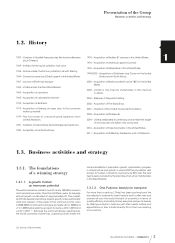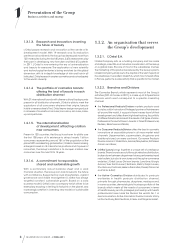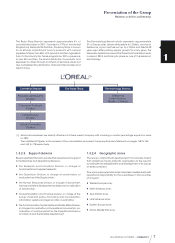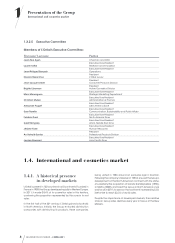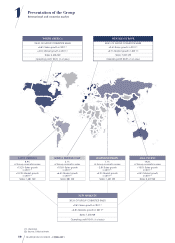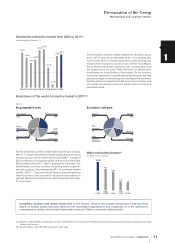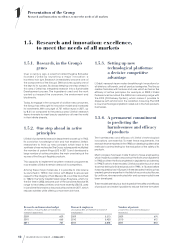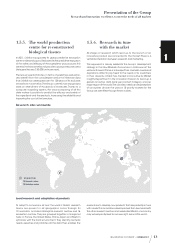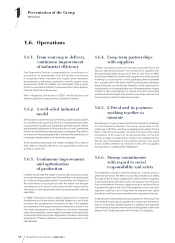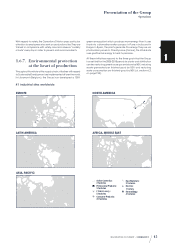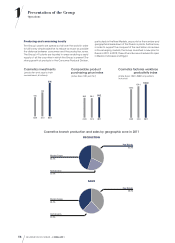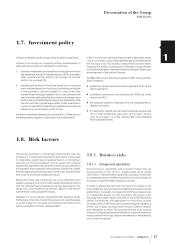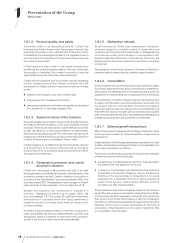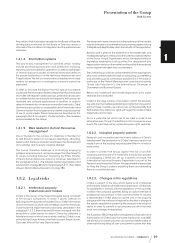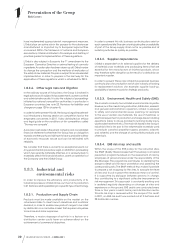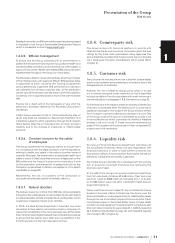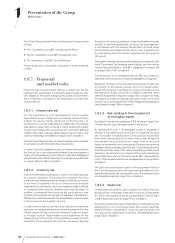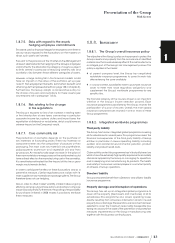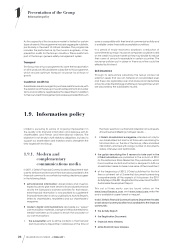Loreal 2011 Annual Report Download - page 16
Download and view the complete annual report
Please find page 16 of the 2011 Loreal annual report below. You can navigate through the pages in the report by either clicking on the pages listed below, or by using the keyword search tool below to find specific information within the annual report.
14 REGISTRATION DOCUMENT − L’ORÉAL 2011
1Presentation oftheGroup
Operations
1.6. Operations
1.6.1. From sourcing to delivery,
continuous improvement
of industrial efficiency
The Operations Division is responsible for coordination of
production, its optimisation and distribution of products.
It comprises seven industrial and supply chain expertise :
procurement, packaging, production, quality, supply chain,
environment health and safety, and real estate. Three support
functions complete the Division’s resources: Information Systems,
Finance and Human Resources.
After integrating D istribution in2007, the Production and
Technology Division became the Operations Division.
1.6.2. A well-oiled industrial
model
With locations all over the world, the Group’s plants produce 87%
of cosmetics units sold. This choice of in-house production offers
a guarantee of quality and traceability and reduces risks. Plants
are generally dedicated to the production of one Operational
Division and a limited number of product categories. The rotation
of brands on the packaging lines is furthermore assisted by an
increased standardisation of industrial processes.
This industrial model avoids the need to multiply the number of
sites, helps to improve efficiency and guarantees continuous
activity on each site.
1.6.3. Continuous improvement
and optimisation
ofproduction
L’Oréal has set itself the target of continually improving output
and optimising production costs. This ambition is accompanied
by a demanding quality system. It guarantees the integrity of
the formulation of products all over the world and ensures
compliance with social and environmental responsibility
standards on each production site in accordance with national
regulation.
In2008, L’Oréal launched a global programme to improve
the efficiency of its production facilities. Based on a set of best
practices, this programme is shared by all sites. This triggered
mutualisation of the support and procurement functions in the
five major geographic zones. Efficiency has been improved
while the specificities of each region have been maintained. This
productive, highly responsive organisation model is particularly
adapted to L’Oréal’s objective of accelerated growth in the
New Markets.
1.6.4. Long-term partnerships
with suppliers
L’Oréal’s industrial success can also be accounted for by the
Group’s exacting standards in the choice of its suppliers and
the sustainable relationships that it sets up with them. In2010,
the Group initiated the “wall-to-wall” programme which consists
in setting up a production unit for packaging items operated
by a supplier within the plant itself. This partnership develops
responsiveness and industrial flexibility, while reducing the
transportation of packaging items and the generation of waste
related to their packaging. It is aimed at plants with highly
specialised technologies that produce very large volumes and
have ongoing needs for external resources.
1.6.5. L’Oréal and its partners:
working together to
innovate
Packaging is a major environmental and industrial challenge
for the Operations Division. The Group responded to this
challenge in2010 by creating a packaging fair called “Cherry
Pack”. International suppliers are able to propose their latest
innovations at this event on an exclusive basis. At the end
of the two days of presentation, projects are selected by the
brands and the Research & Innovation Division. This event
shows L’Oréal’s intention to reinforce its links with its suppliers
by counting on collaborative intelligence.
1.6.6. Strong commitments
with regard to social
responsibility and safety
The Operations Division, like the Group as a whole, plays a
predominant role in the field of social responsibility and safety.
Through its “Buy & Care” programme, L’Oréal incites its suppliers
to be more responsible and carries out rigorous monitoring of
their commitments through a large number of social audits on
suppliers throughout the world. The objective is not to sanction
suppliers' premices but to help them to improve their safety
standards and their environmental and social performances.
In creating the “Solidarity Sourcing” programme, the Group took
the initiative of using local suppliers who make commitments in
favour of minorities: disabled workers or workers from deprived
communities. It may also involve very small suppliers or fair trade
players that L’Oréal valorises with the help of its suppliers.



